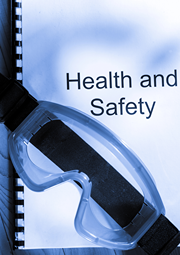Benefits of Continuing Education for Career Advancement in Healthcare
The healthcare field is constantly evolving, with new technologies, treatments, and practices emerging regularly. For professionals in this industry, keeping up with these changes is essential for career growth and providing high-quality care to patients.
Continuing to gain new qualifications enhances your skills and opens doors to better opportunities. Ongoing training and development can help advance your career and improve patient outcomes.
Keeping Up with Industry Advances
Healthcare is one of the fastest-changing industries. From advanced diagnostic tools to innovative treatment methods, staying current with these developments is crucial for professionals who want to remain effective in their roles. Ongoing training helps you understand and apply the latest practices, ensuring you’re prepared to meet the needs of your patients. By staying informed, you also become more confident in handling new challenges and delivering quality care.
Advancing Your Career Through Flexible Learning Options
Flexible learning options allow professionals to enhance their skills and qualifications without disrupting their work or personal lives. Online programs and self-paced courses provide the convenience needed to balance multiple responsibilities. These options make pursuing higher education and career growth easier, offering the flexibility to learn at your own pace and focus on your specific goals.
For example, individuals involved in nursing can benefit from enrolling in online RN to BSN degree programs that offer a tailored pathway to advancing their career. These programs help registered nurses build on their experience and credentials while gaining additional skills and qualifications. The flexibility of online learning allows nurses to continue working while earning their degrees, making it easier to balance professional and personal commitments. Completing a program like this opens doors to leadership roles, specialized positions, and opportunities to make a greater impact in patient care.
Expanding Job Opportunities
Continuing to build your skills makes you eligible for a wider range of positions. Many advanced roles, such as nurse practitioner, clinical specialist, or healthcare manager, require additional credentials or certifications. By investing in your professional growth, you not only increase your qualifications but also make yourself a more competitive candidate. With advanced training, you gain access to roles that may have been out of reach, broadening your career options and providing greater job security.
Improving Patient Care and Outcomes
Gaining new knowledge and techniques directly benefits the people you care for. When you’re equipped with the latest tools and evidence-based practices, you can provide better diagnoses, treatments, and follow-up care. For example, learning about advances in infection control or chronic disease management allows you to apply these insights to your daily work, resulting in improved patient outcomes. The more you grow as a professional, the more you contribute to enhancing the quality of healthcare.
Gaining Specialized Skills
Specialization is another significant advantage of ongoing learning. Whether you’re interested in pediatrics, geriatrics, or critical care, focusing on a specific area allows you to develop expertise that sets you apart. Specialized skills not only improve your job satisfaction but also make you an asset to your organization. Employers value professionals who bring advanced knowledge in specific fields, as it strengthens the overall quality of care provided by the team.
Building Professional Confidence and Credibility
Continuing to improve your skills and gain qualifications directly impacts your confidence. As you acquire new knowledge and master advanced techniques, you become more self-assured in your abilities. This confidence benefits your day-to-day performance and enhances your credibility among peers, supervisors, and patients. Colleagues are more likely to seek your advice, and patients will feel reassured knowing they are in capable hands.
Meeting Licensing and Certification Requirements
Many roles in the healthcare industry require professionals to maintain licenses or certifications through ongoing training. For example, nurses often need to complete continuing education units (CEUs) to keep their licenses active. These requirements ensure that healthcare providers stay updated on best practices and the latest standards in their field. By fulfilling these obligations, you maintain your credentials and demonstrate a commitment to professional excellence. This proactive approach reflects positively on your career and ensures you’re always prepared to meet industry expectations
Enhancing Leadership and Management Opportunities
As you gain more experience and qualifications, you’ll find greater opportunities to step into leadership roles. Advanced training equips you with skills in team management, decision-making, and strategic planning—all essential for supervisory positions. Whether you aspire to become a nurse manager, department head, or healthcare administrator, continuing to grow professionally prepares you for these responsibilities. Leadership roles not only come with greater influence but also offer the chance to shape the future of healthcare in your organization.
Increasing Earning Potential
One of the most tangible benefits of advancing your qualifications is the potential for higher pay. Specialized skills, advanced degrees, or certifications often result in increased earning opportunities. For example, a nurse with a bachelor’s degree may qualify for roles that offer better salaries compared to those available to nurses with an associate degree. Additionally, leadership positions and specialized roles often come with financial incentives, making your investment in professional growth worthwhile.
Continuing education is essential for career advancement and professional success in the healthcare industry. It keeps you updated on the latest developments, improves patient outcomes, and opens doors to new opportunities. By committing to continuous improvement, you advance your career and contribute to a higher standard of care for all.
Read about career requirements in behavioral health.









